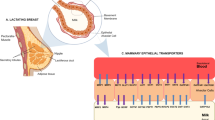Abstract
Objectives: The pharmacokinetics of caffeine and its dimethylxanthine metabolites were evaluated in Nigerians, for whom it is normal to consume caffeine-containing beverages during ill health and recuperation in the belief that caffeine aids early recovery from illness; however, there are no data defining the kinetics of caffeine in healthy and ill Nigerians.
Materials and methods: A single oral dose of 300 mg caffeine was given to ten healthy adult Nigerians and ten adults suffering from acute uncomplicated Plasmodium falciparum malaria infection. Caffeine and its dimethylxanthine metabolites were measured in plasma and saliva of healthy subjects and in plasma of patients suffering from malaria using high-performance liquid chromatography.
Results: The plasma pharmacokinetics of caffeine per se in both groups was similar (P > 0.05). The maximum plasma concentration (Cmax) of paraxanthine was significantly lower (P < 0.05) in malaria (0.9 ± 0.4 μg/ml) than in healthy controls (1.4 ± 0.5 μg/m1), and the paraxanthine:caffeine area under the plasma concentration–time curve ratio, an index of cytochrome P450 (CYP)IA2 activity was significantly lower (P < 0.05) in malaria patients (0.5 ± 0.1) than in healthy controls (0.3 ± 0.2). The elimination half-life of theophylline was longer in malaria, while the area under the plasma concentration–time curve of theobromine was significantly higher (P < 0.05) in malaria (7.1 ± 3.4 μg ml−1 h) than in healthy adults (4.1 ± 2.2 μg ml−1 h). Excellent correlations were found between saliva and plasma concentrations of caffeine (r 2=0.98) with a mean saliva:plasma concentrations ratio of 0.7 ± 0.1. The plasma concentrations (Cmax and AUC) were therefore higher than the corresponding salivary levels, so that the apparent oral clearance calculated for saliva exceeded the true oral clearance based on plasma data.
Conclusions: Acute Plasmodium falciparum malaria produced significant changes in the disposition of caffeine metabolites. Analysis of concentrations in saliva is a useful non-invasive method for monitoring the kinetics of caffeine and paraxanthine in Nigerians.
Similar content being viewed by others
Author information
Authors and Affiliations
Additional information
Received: 14 April 1999 / Accepted in revised form: 30 November 1999
Rights and permissions
About this article
Cite this article
Akinyinka, O., Sowunmi, A., Honeywell, R. et al. The effects of acute falciparum malaria on the disposition of caffeine and the comparison of saliva and plasma-derived pharmacokinetic parameters in adult Nigerians. E J Clin Pharmacol 56, 159–1065 (2000). https://doi.org/10.1007/s002280050735
Issue Date:
DOI: https://doi.org/10.1007/s002280050735




